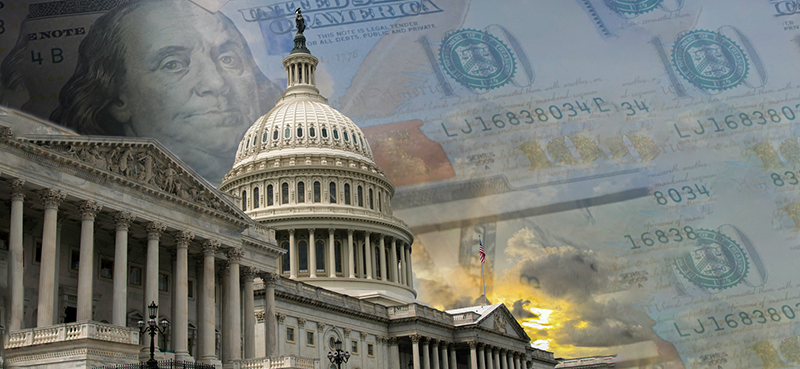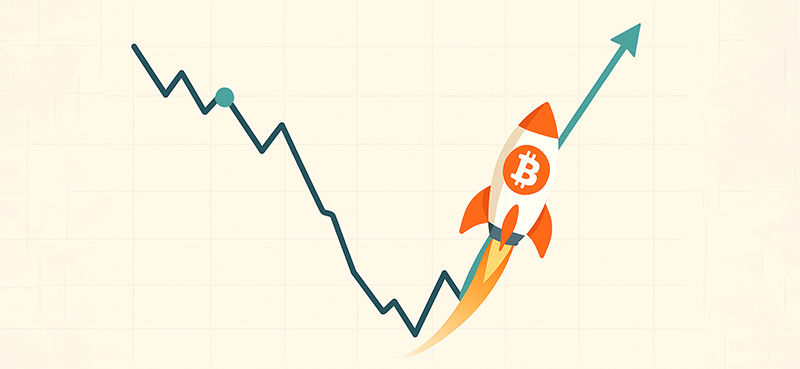Well, it’s official: The Big, Beautiful Bill is now law.
And big is an understatement. The 1,000-plus-page legislative package is packed with spending, tax cuts, and lots of other provisions.
Most folks—including the politicians who passed it—don’t even know everything that’s in it.
But for investors, that doesn’t matter.
Because the bottom line is this: It’s bullish. In fact, this monster of a bill could be one of the most powerful catalysts for higher asset prices we’ve seen in years.
Let’s break down what’s in it—and, more importantly, how to position your portfolio to profit.
What’s actually in the bill?
As you undoubtedly know, the Big, Beautiful Bill has been extremely polarizing and involved numerous back-and-forth negotiations between the House and Senate to pass it. In the end, here are the key highlights of what’s included:
- Trillions in new spending: The debt ceiling has been raised by $3–5 trillion, giving the government even more room to spend.
- Broad tax cuts and extensions: Benefits for individuals and businesses, including incentives for investment and capital spending.
- Selective clean energy cuts: Some renewable tax credits were trimmed—but not fully removed, creating volatility (and opportunity) in solar names.
- Infrastructure and defense spending: Billions allocated to roads, ports, military modernization, and power projects.
- Private sector incentives: New policies designed to spur private growth, including relaxed capital access rules and regulatory easing.
- New trade deals: Restructured tariffs with countries like Vietnam, bringing more clarity to global trade and supply chains.
Why this will push asset prices higher
1. It’s a new wave of stimulus
Every few years, we hear the same thing: “We need to get our fiscal house in order.” Then comes the next election cycle, followed by more spending. This bill is no different. Anytime the government throws this kind of liquidity into the system, it finds its way into stocks, real estate, crypto, and gold. We’ve seen it before—and we’re about to see it again.
2. The private sector will get a boost
One of the bill’s key goals is to transition from government-led growth to private sector-led growth. For instance, it includes broad tax incentives, regulatory rollbacks for corporations, and provisions to make funding easier. That means U.S. companies will get more room to run—and more access to capital.
3. Less uncertainty = more risk-on behavior
New trade deals (like the Vietnam agreement) and tariff clarity remove a lot of the uncertainty that investors hate. Uncertainty kills risk appetite. But this bill gives the market some answers—and the green light to go risk-on.
Bonus: The Fed is about to get friendlier
This one doesn’t pertain as much to the bill, but it’s a catalyst worth mentioning. Fed Chair Jerome Powell’s term is over in May. And odds are high that his replacement will be more dovish—meaning lower interest rates. The market is already pricing in cuts. That means cheaper money, easier credit, and higher multiples for risk assets.
How to position your portfolio
If you’ve been waiting on the sidelines waiting for more market clarity, it’s time to get off the fence. Here’s how to position yourself as assets keep pushing higher:
1. Be invested
This isn’t the time to sit in cash. The wave is rising. Don’t try to time the perfect entry—just get exposure.
2. Own hard assets
Gold and Bitcoin are long-term winners here. More debt, more spending, and weaker dollars are great for real stores of value.
3. Bet on these winners
Companies with big growth stories, large total addressable markets (TAMs), and access to new capital will thrive. Think AI infrastructure, financial innovation, private market access, and defense. Small caps are also due for a boom higher as government spending ramps up.
4. Look global
Firms like Robinhood are expanding into Europe, offering fractional shares and crypto access overseas. Meanwhile, BlackRock is building global partnerships to bring private assets to retail investors. Follow the capital flows.
5. Don’t overthink it
Yes, markets are near all-time highs. Yes, there will be pullbacks. But the direction of the market is clear: There’s way more upside ahead. So, stay invested. Trim your positions if your thesis changes—but don’t get shaken out of the market.
The bottom line: The Big, Beautiful Bill is here. And love it or hate it, this thing is fuel for asset prices. Don’t miss the boat. For specific trades and stock tips to play the upside, tune into Wall Street Unplugged Premium each week.




















